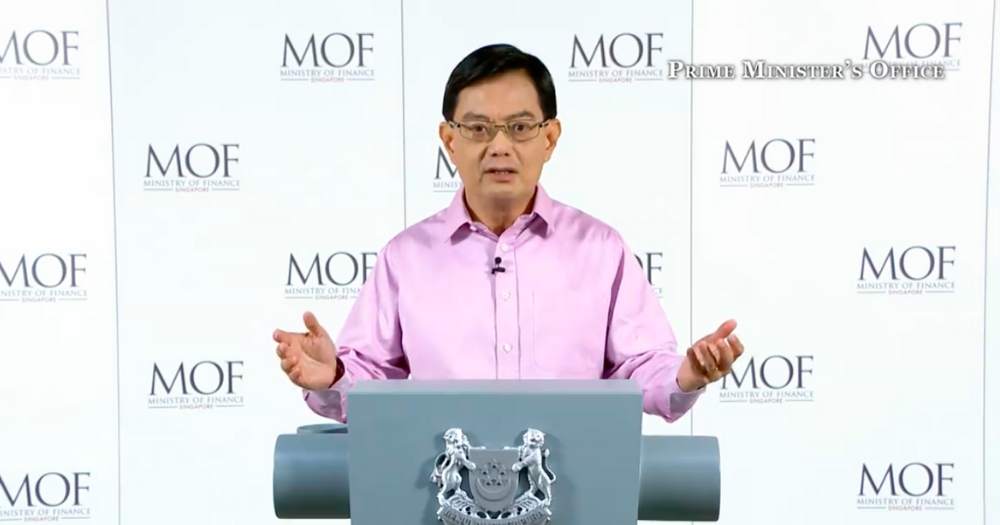Deputy Prime Minister and Minister for Finance Heng Swee Keat announced in his ministerial statement on Monday (Aug. 17) that Singapore will be channelling another S$8 billion towards continuing the fight against Covid-19 in the coming months.
He announced that the measures will be funded by reallocating money from other areas, such as development expenditures that were delayed due to Covid-19, and there are no plans to draw on past reserves beyond what was approved by President Halimah Yacob earlier.
Here's what you need to know about the newly-announced measures:
1. Jobs Support Scheme extended until Mar. 2021
Heng announced that the Jobs Support Scheme (JSS) will be extended by seven months, until Mar. 2021.
However, he noted, the JSS is not sustainable at the current level:
"It draws heavily on our reserves and risks trapping our workers in unviable businesses."
As some sectors are recovering from the Covid-19 pandemic at different speeds, Heng stated that the support will be adjusted based on the projected recovery of the different sectors.
Under the JSS extension, said Heng, most businesses will receive wage support ranging from 10 per cent to 75 per cent for 17 months, in order to help them retain as many workers as possible.
Firms in the Tier 1 aerospace, aviation, and tourism sectors, which have been hardest hit, will receive support of 50 per cent wage levels for seven more months. This is a downgrade from the 75 per cent support they previously received.
For the built environment sector, Heng announced that they would receive 50 per cent wage support for two more months, before lowering to 30 per cent for wages paid up to Mar. 2021. This is in line with the phased resumption of construction activities, he said.
The arts and entertainment, food services, land transport, marine and offshore, and retail sectors will receive 30 per cent wage support for seven more months.
The majority of the remaining sectors will receive 10 per cent support for seven more months.
The few sectors that are managing well, said Heng, such as biomedical sciences, financial services, and ICT, will receive 10 per cent support for four more months, for wages paid up to Dec. 2020.
2. Jobs Growth Incentive
To support hiring in growing sectors — such as biomedical sciences, financial services, ICT, public healthcare, long-term care, F&B, and manufacturing sectors — the government will be launching the Jobs Growth Incentive (JGI).
This JGI, which will cost the government S$1 billion, will help firms increase their headcount of local workers over the next six months.
For these firms, the government will co-pay up to 25 per cent of salaries of all new local hires for one year, subject to a cap. For those aged 40 and above, the co-payment to firms will be up to 50 per cent.
Heng stated that the Ministry of Manpower will provide more details later in August.
In addition, 24 new SGUnited Jobs and Skills Centres have been set up in the heartlands in order to help direct workers to new opportunities.
3. Covid-19 Support Grant extended
The Covid-19 Support Grant (CSG), which was introduced in May, will be extended until Dec. 2020.
Starting from Oct. 1, 2020, the extension will be open to both existing CSG recipients and new applicants. To qualify, unemployed applicants must demonstrate job search or training efforts.
Heng announced that the Ministry of Social and Family Development will share more details about this measures in early September.
So far, he said, more than 60,000 residents have benefitted, and more than S$90 million has been disbursed.
4. Workfare Special Payment eligibility expanded
Heng added that another important group to look out for is low-wage workers.
As such, he shared that he would widen the eligibility of the S$3,000 Workfare Special Payment, which was announced as part of the Resilience Budget in March, to include those who were not on Workfare last year, but have received or will be receiving Workfare for work done this year.
It had been previously announced that the S$3,000 payout would be given in two rounds to those in the bottom 20 per cent of the workforce.
The first half was credited directly on Jul. 28 to eligible recipients who have their bank accounts registered with the government, while the second half will be credited to them on Oct. 28.
Totally unrelated but follow and listen to our podcast here
Top photo via Facebook / Heng Swee Keat .
If you like what you read, follow us on Facebook, Instagram, Twitter and Telegram to get the latest updates.
